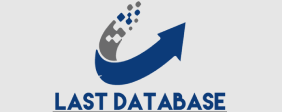We’ve all been there — emails that are way off. It’s like somebody just pulled your name out of a hat. In reality, 72% of consumers only interact with messages that are personalized to their interests.
This is what occurs when email phone number list segmentation is not being done correctly (or, worse still, not being done at all). What happens is that brands end up in spam folders or, worse still, are totally ignored.
But when implemented correctly, email segmentation makes your message personal, relevant, and timely. And it’s this that leads to greater open rates, improved engagement, and more sales.
Then, how do you segment your email list properly? That’s what I’ll answer below. Here are 15 real-life email segmentation tips that will enable you to send the right message to the right person at the right moment.
Also read our tried and tested email marketing guide for beginners
1. Email Segmentation by Engagement Level
It is important to know how your subscribers respond to your emails. Some are active readers, but others might have disengaged in the past. nstrumental spanish course Email segmentation by engagement can freshen up your campaigns.
Strategies:
- Inactive Subscribers: Campaign to Reactivate. Formulate offers for them or ask for criticisms to know why they did not engage
- New Subscribers: Welcome them with open arms. Let them know what your brand stands for, showcase unique products or service offerings, set expectations for how and what they’ll be receiving in the future.
- New Subscribers: Bring them into the fold. State exactly what your brand is, showcase what makes products or services unique, and establish expectations for future communication.
This is important because emails sent to segments get 100.95% higher click rates than regular emails. If you’re not segmenting by engagement you are leaving so much on the table
Real-World Example:
Intermix, a clothing store for women, successfully implemented engagement-based segmentation. Through monitoring historical buying patterns and email engagement, they grouped their customers into such segments as VIPs, shoppers who browsed sales, and brand advocates. Personalizing email content on such a basis increased email revenue by 28%.
2. Use Purchase History to Send Relevant Offers
Sending the same stock promotional offer to every single customer is not only ineffective, it can be irrelevant and spammy. Rather, using purchase history helps personalize the recommendations which leads to higher customer india number list satisfaction and hence, increased sales. When customers are shown product suggestions that match their previous purchases, they are much more likely to engage, which makes higher conversions and increased repeat purchases a reality.
Mailmodo found that 25% of email marketing revenue is generated from campaigns segmented by purchase behavior. This means that businesses that focus their emails according to past purchases

